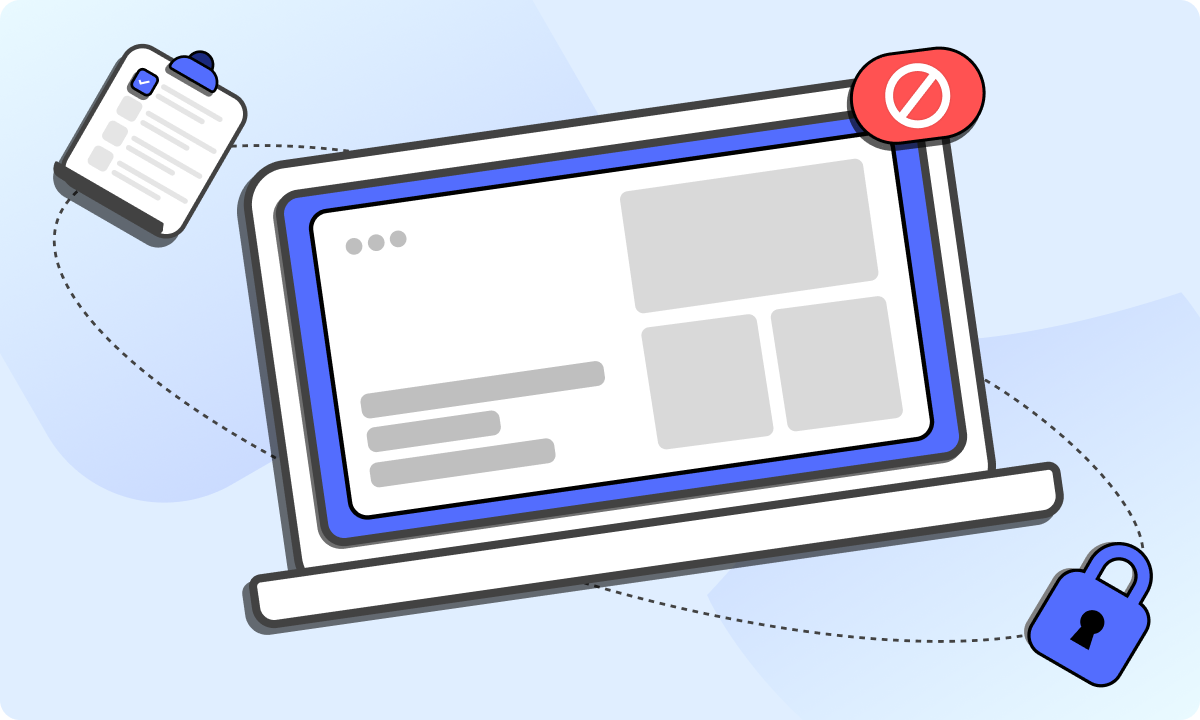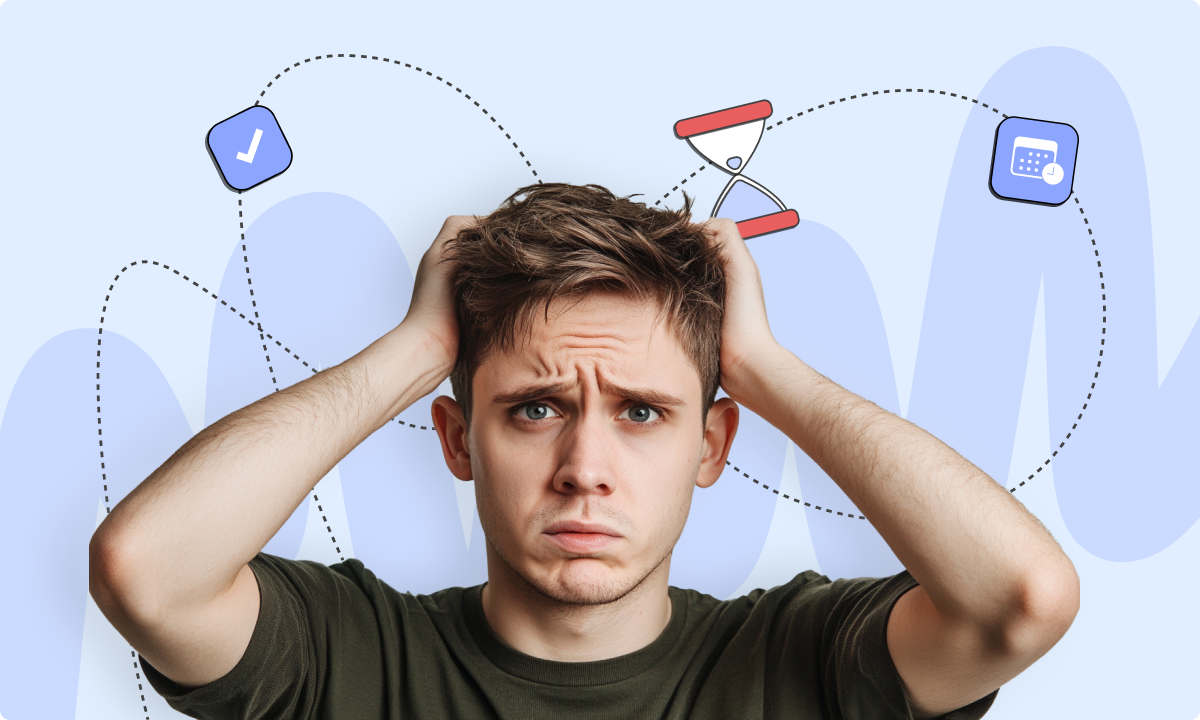Visualize this scene: Monday morning arrives, and there you are, confronted with an overwhelming pile of tasks, each accompanied by a rapidly approaching deadline. The clock steadily ticks away, but your productivity appears frozen in time.
Does this resonate with you? Take comfort in knowing that this is a common experience for many. Consistently achieving high productivity is a widespread challenge in the swiftly moving pace of today’s work environment.
The Problem: Navigating the Productivity Maze
Recent studies reveal a startling truth: Voucher Cloud’s research reveals a striking insight: the average office worker achieves only two hours and 23 minutes of productivity each day. Complementing this, statistics from GoRemotely highlight that a significant 79% of workers concur with the sentiment that they aren’t productive throughout the entirety of an eight-hour workday.
Distractions, multitasking, and inefficient work practices are the culprits behind this productivity crisis. But what if there were tools and strategies that could transform your workday from overwhelming to manageable?
How to Increase Productivity at Our Workplace?
Increasing productivity at work is a multifaceted endeavor that requires a combination of the right tools, effective strategies, and a mindset geared towards continuous improvement. By leveraging tools and adopting effective work strategies, you can transform your workday into a more productive and fulfilling experience.
1. Utilizing BlockSite’s Tools for Enhanced Focus
BlockSite stands out as a crucial tool in the arsenal of productivity-enhancing applications. Its features are specifically designed to target and mitigate common distractions that hamper efficiency in the workplace.
Block List: Your Personal Productivity Guard
The Block List feature, available on Android, iOS, and as a browser extension, is a powerful tool for creating a distraction-free work environment. Users can list websites and apps that they find distracting, and BlockSite will ensure these are inaccessible during work hours.
This feature is particularly useful for those who find themselves habitually drifting towards social media or news websites. By eliminating these distractions, BlockSite helps users maintain focus on their tasks, leading to a more productive workday.
Block Apps: Control Over Mobile Distractions
Smartphones often become a major distraction in today’s world, underscoring the importance of learning how to improve productivity at work by applying phone detox and restricting the use of certain apps. BlockSite’s Block Apps feature, available exclusively on Android and iOS, allows users to block distracting applications on their mobile devices.
To learn how to block distracting apps, this feature offers the perfect solution. Whether it’s social media apps, games, or any other attention-diverting application, Block Apps ensures that your mobile usage during work hours doesn’t derail your productivity. This feature is especially beneficial for professionals who rely on their phones for work but want to avoid the lure of non-work-related apps.
Redirect: A Proactive Approach to Distractions
The Redirect feature, available on Android as an app and as a browser extension, offers a unique approach to handling distractions. Instead of simply blocking access to certain sites, it redirects users to a predetermined website of their choice.
You can redirect it to a work-related site or a page that offers motivation or mindfulness exercises.
Redirect transforms a moment of potential distraction into an opportunity for productivity or personal growth.
Focus Mode: Deep Work Facilitator
Focus Mode, available on Android as an app and browser extension, is designed for those times when undivided attention is required. It blocks all forms of digital distractions for a set period, allowing users to engage in deep, focused work.
Utilizing this mode is particularly useful for tasks that require high levels of concentration, such as writing reports, coding, or analyzing data. By creating a distraction-free environment, Focus Mode helps users complete their most challenging tasks more efficiently.
2. Prioritizing Tasks Effectively
Effective prioritization is a cornerstone of productivity. It involves identifying the most critical tasks and dedicating the right amount of time and resources to them. One effective method is the Eisenhower Box, which divides tasks into four categories based on urgency and importance.
- Tasks that are both urgent and important should be done immediately.
- Important but not urgent tasks should be scheduled for later.
- Urgent but unimportant tasks can be delegated.
- Tasks that are neither urgent nor important should be eliminated.
This method ensures that you spend your time and energy on tasks that genuinely contribute to your goals.
3. The Power of Structured Breaks
Understanding how to increase your productivity at work involves taking regular, structured breaks, which is essential for maintaining high performance over extended periods. Techniques like the Pomodoro Technique, which involves:
- Working for a set period (typically 25 minutes)
- A short break right after (5 minutes)
This helps in maintaining a high level of focus and preventing burnout. During these breaks, engaging in activities completely unrelated to work, such as a brief walk, stretching, or a relaxing hobby, can help refresh the mind and body, making you more productive when you return to your tasks.
4. Creating an Ergonomic Workspace
An ergonomic workspace is vital for long-term productivity. It involves setting up your work environment to reduce strain and fatigue. This includes:
- Having a comfortable chair that supports your posture
- Positioning your computer screen at eye level to avoid neck strain
- Ensuring that your keyboard and mouse are placed to prevent wrist strain
- Good lighting to reduce eye strain
An ergonomic workspace not only increases immediate productivity but also contributes to your overall health and well-being, ensuring that you can consistently perform at your best.
5. Balancing Collaboration and Individual Work
While collaboration is essential in most workplaces, it’s important to balance it with individual work. Excessive meetings and reliance on teamwork can sometimes hinder individual productivity. Using collaborative tools for communication can streamline teamwork without sacrificing individual work time.
It’s also important to set clear roles and responsibilities within a team to prevent overlaps and confusion. When collaboration is structured and goal-oriented, it enhances the productivity of the entire team.
6. Embracing the Role of Physical Activity
Incorporating physical activity, even in small amounts during the workday, serves as an effective method on how to boost your productivity at work. Regular movement, such as walking or stretching, helps in reducing physical discomfort and mental fatigue. It increases blood flow, which improves brain function and focus.
Incorporating physical activity into your work routine doesn’t require extensive workouts; even short, regular intervals of movement can make a significant difference in your overall productivity.
7. Leveraging Technology for Efficient Communication
Efficient communication holds the key to productivity in the modern workplace. Leveraging technology like instant messaging and video conferencing can significantly reduce the time spent on meetings and emails.
Tools that allow for quick, clear communication can streamline project management and team collaboration, ensuring that everyone is on the same page and reducing the time spent on misunderstandings or miscommunications.
8. Continuous Learning and Adaptation
The workplace is constantly evolving, and so should your productivity strategies. Continuous learning and adaptation are crucial so it’s important to do these practices:
- Stay informed about new productivity tools and techniques.
- Be willing to experiment with different approaches to find what works best for you.
- Regularly review and adjust your strategies to align with your changing work environment and responsibilities.
Unlocking Your Full Productivity Potential in the Workplace
Peak productivity in the workplace is an evolving challenge, necessitating a mix of self-discipline, well-thought-out strategies, and appropriate tools. BlockSite stands out with its capabilities to address common distractions, effectively supporting your productivity goals. When combined with smart task prioritization, regular and structured breaks, ergonomic workspace setups, and effective teamwork, it creates a holistic strategy for improving work efficiency.
Each individual and organization has a distinct journey towards enhanced productivity. The key lies in constantly fine-tuning your methods and tools to meet evolving demands. Equipped with these strategies and the support of tools like BlockSite, you are on the path to transforming your workdays into more efficient and rewarding experiences.
FAQs
How can structured break schedules enhance work productivity?
Implementing a structured break schedule is crucial for maintaining high productivity levels. Breaks should be regular but not too frequent, allowing the mind to rest without losing focus on work tasks. Techniques like the Pomodoro Technique, which involves 25 minutes of focused work followed by a 5-minute break, can be highly effective. During breaks, engage in activities that differ from your work tasks, like a brief walk, meditation, or a relaxing hobby. This helps in mental reset and prevents burnout, leading to increased concentration and efficiency when you return to work.
How can I effectively prioritize tasks in a high-pressure work environment?
In high-pressure environments, effective prioritization is key. Start by identifying urgent tasks that require immediate attention and those that are important but not urgent. Tools like the Eisenhower Matrix can be helpful. Allocate specific times to tackle these tasks, focusing on high-impact activities first. It’s also crucial to set realistic deadlines and communicate with your team about your priorities. Don’t hesitate to delegate tasks when possible, and remember to reassess your priorities regularly as situations can change rapidly in a dynamic work environment.
What strategies can help reduce workplace stress and increase efficiency?
To reduce stress and boost efficiency, start by organizing your workspace and schedule. A clutter-free environment and a well-planned day can significantly lower stress levels. Implementing time management techniques, like time-blocking, ensures that you’re working on the right tasks at the right time. Regular physical activity, even short walks or stretching during the day, can also alleviate stress. Additionally, mindfulness practices like meditation can help in maintaining a calm and focused mind, contributing to overall efficiency.
How does collaboration impact individual productivity?
Collaboration, when done effectively, can enhance individual productivity by pooling diverse skills and perspectives. It fosters a sense of community, making challenging tasks more manageable and enjoyable. However, it’s important to balance collaborative activities with individual work. Excessive meetings or dependency can hinder productivity. Utilize collaborative tools for streamlined communication and ensure that collaborative efforts are structured and goal-oriented. Setting clear roles and responsibilities within a team can also prevent overlaps and confusion, enhancing individual productivity.
What role does workplace ergonomics play in enhancing productivity?
Ergonomics plays a significant role in workplace productivity. An ergonomically designed workspace can reduce physical discomfort and prevent long-term health issues. Comfortable seating, appropriate desk height, and good lighting can reduce fatigue and increase concentration. Additionally, ergonomic tools like keyboard, mouse, and monitor stands can prevent strain injuries. A well-designed ergonomic environment not only boosts productivity but also enhances overall job satisfaction and well-being. Regularly assess your workspace and make adjustments as needed to ensure it supports your physical comfort and productivity.





